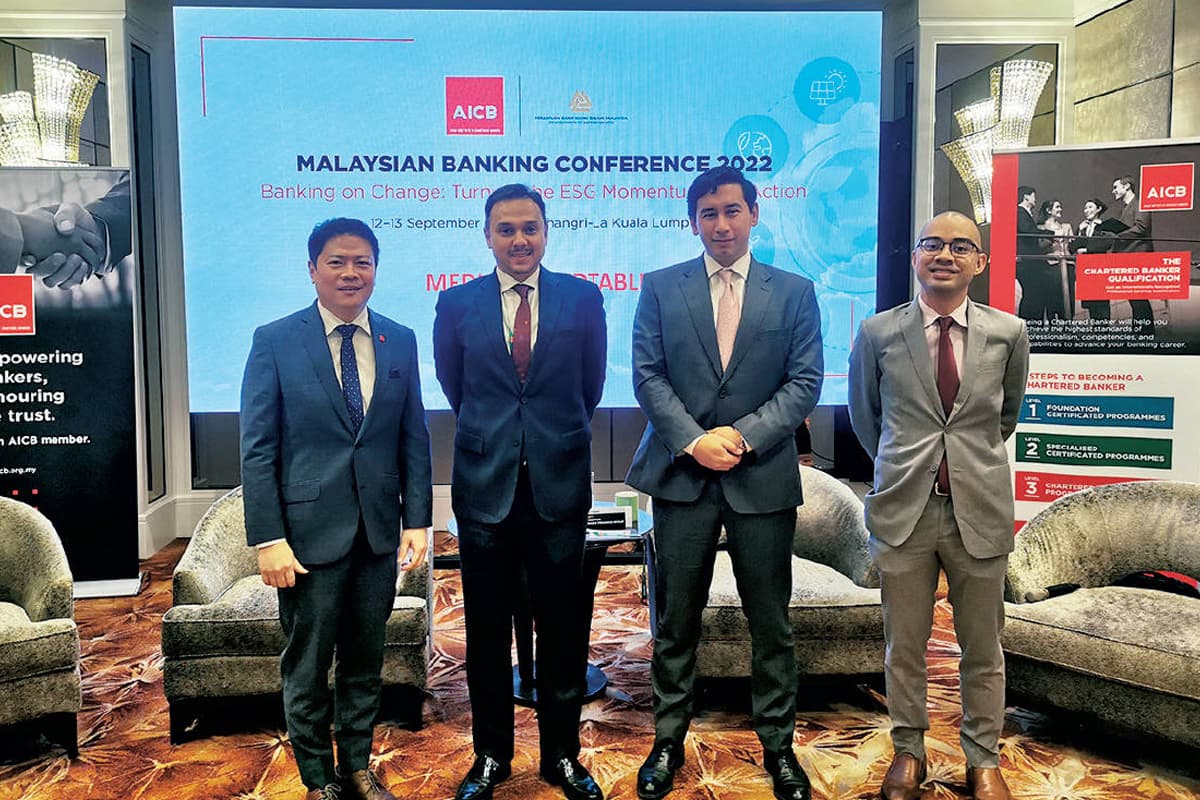
This article first appeared in The Edge Malaysia Weekly on October 17, 2022 - October 23, 2022
Businesses will be expected to have a credible transition plan if they want to access sustainability-linked financing (SLF), said several speakers at a media roundtable during the inaugural Malaysian Banking Conference 2022 last month.
The conference, themed “Banking on change: Turning the ESG momentum into action”, was organised by the Asian Institute of Chartered Bankers (AICB) and the Association of Banks in Malaysia (ABM).
This emphasis on transition plans comes as SLF is gaining traction as a key tool to help businesses adapt to a low-carbon economy.
SLF allows borrowers to use the loan for general purposes. The terms of the sustainability-linked loans or bonds are tied to the borrowers’ performance that is related to environmental, social and governance (ESG). SLF is now the fastest-growing sustainable finance instrument, according to the International Finance Corporation (IFC), with over US$809 billion (RM3.7 trillion) issued to date.
However, since it is not restricted to funding specific environmental or social projects, like other types of sustainable bonds, financial providers will have to scrutinise the potential borrowers’ transition plans, said Dr Ben Caldecott, founding director of the Oxford Sustainable Finance Group at the University of Oxford in the UK.
“We need to define what a good transition plan looks like in different sectors in different jurisdictions; we need to be clear about what good targets look like; we need to be clear about how institutions can be held accountable for meeting these targets. There needs to be clear disclosures,” said Caldecott.
Not every business is able to transition, he added. “Some might not be able to transition due to the industry they’re in, their balance sheet [and] whether they can finance the transition or borrow enough money to transition. It could [also have] to do with corporate culture. [Maybe] they just don’t want to transition.”
Financial institutions have to identify the companies that are able to transition and have credible transition plans. “[They] can provide financial products and services to them. And wherever possible, call out greenwashing,” Caldecott continued.
There needs to be improved collection of data in real time, so industry players can ascertain whether the potential borrowers are doing as they say.
“This is where innovations in data and analytics become very important because you can potentially see in near real time what companies are doing, whether they’ve created a problem and whether they are performing well,” he said.
HSBC Amanah Malaysia Bhd issued the first sustainability-linked sukuk in the world for Yinson Holdings Bhd in 2021. The issuance leverages the link between Yinson’s sustainability performance targets and its financial metrics.
Seeing a player in the oil and gas industry take this step could be a sign that it is serious about changing its business model. It is unlikely for financial institutions or investors to provide new capital to players in this industry if they do not transition, since it does not align with many funders’ commitments to achieve net zero emissions.
“One must acknowledge that it’s quite difficult for them (players in the oil and gas industry) to do this in the first place,” said Raja Amir Shah Raja Azwa of HSBC Amanah Malaysia.
He emphasised that if businesses want to access SLF, a credible transition plan must first be in place. It must be measurable, quantifiable and ambitious. It also usually requires a second party opinion provider to assess whether the key performance indicators selected are ambitious enough.
Yinson has three sustainability performance targets. One is to increase its renewable energy generation; another is to decrease its carbon intensity per barrel of oil equivalent; and the third is to decrease its carbon intensity per megawatt-hour. The targets are set for 2025, 2030 and 2050.
Another driving factor for businesses to put in place a transition plan is the introduction of the Climate Change and Principle-based Taxonomy (CCPT) by Bank Negara Malaysia. Financial institutions will categorise their clients into different categories, based on their exposure to environmental risks, among other things, and what steps are taken to mitigate them.
Businesses will be put under three classifications: climate supporting, transitioning or watchlist.
“CCPT is in its first year of implementation. We financial institutions had to report in July on our CCPT exposures for the first half of 2022 … It’s a step in the right direction. It’s a step for banks to have a look at their portfolio,” said Raja Amir.
It gives banks the ability to understand the risks to their loan books due to clients who might be affected by changes in weather patterns, social or labour issues. This will then inform their capital allocation, he added.
Is data on businesses’ transition plans and ESG-related risks difficult to collect? “Data is coming in. It’s something that Bank Negara is also helping us with … Hopefully, as we go along, the data will become more transparent and we’ll be able to utilise it.”
Save by subscribing to us for your print and/or digital copy.
P/S: The Edge is also available on Apple's AppStore and Androids' Google Play.